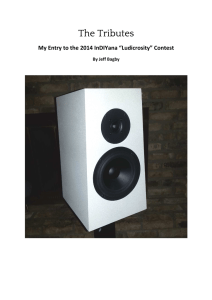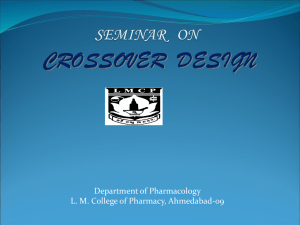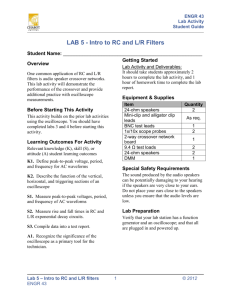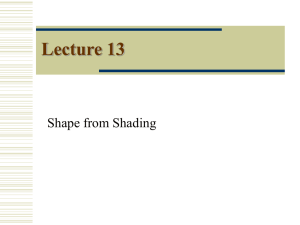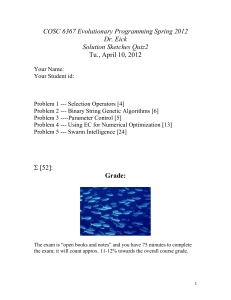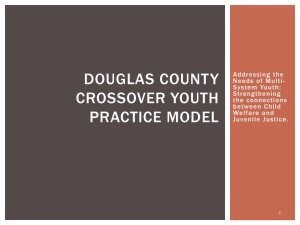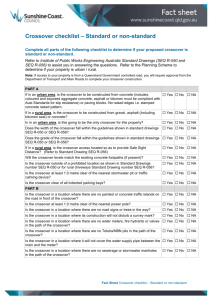Peter Larsen, Crossover Design by software
advertisement
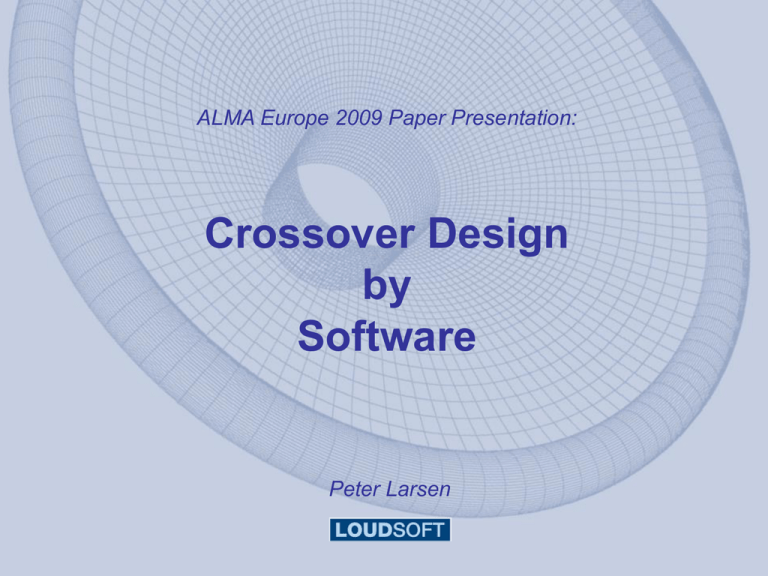
ALMA Europe 2009 Paper Presentation: Crossover Design by Software Peter Larsen The Purpose of the Crossover: 1. Protect midrange and tweeter from LF overload 2. Obtain smooth transition between drivers 3. Equalize frequency response 4. Control off-axis response 5. Obtain smooth power response 6. Minimize number of components to reduce costs Ideal 3rd order - 18dB/Oct Crossover Example Perfect transition between drivers Ideal 2nd order - 12dB/Oct Crossover Cancellation problem @ x-over frequency (2kHz) Ideal 2nd order - 12dB/Oct Crossover Improved response with Tweeter inverted Tweeter inv phase Theoretical Solution with Real Drivers This is the ideal 2nd order -12 dB/Oct crossover again, now using real drivers in phase. The transition is imperfect and the response is not smooth. 2nd order - 12dB/Oct Crossover optimized Fitting the component values to the green target AND preventing impedance below minimum (here 3.2 ohms) is an effective solution 3-way Crossover example 2nd order – 12dB/Oct with inverted phase midrange. Both acoustical and electrical phase is well behaved 3-way Crossover example2 2nd order – 12dB/Oct with midrange in phase. The midrange and tweeter position was moved by simulated time delay 2-way crossover optimized with off-axis responses 0__/15__/30__/45__ deg off-axis SPL. The 30deg response was optimized with the sloping green target for controlling the power response RMS Power in circuit The max RMS Power per IEC 60268-1 weighting may be calculated in all resistive components with the actual x-over. Also the calculated power in each driver is particularly important, because it can be used to simulate the power compression 4th order - 24dB/Oct Crossover example This woofer section has RC impedance compensation, which can be optimized for linear impedance above Fs. However in this case all 6 components were optimized to the 4th order Butterworth target 4th order - 24dB/Oct Crossover Total response after individual woofer and tweeter sections were optimized to 4th order Butterworth target. The total result can be further improved with system optimization 4th order - 24dB/Oct Crossover Optimization Total response after system optimization___. Removing redundant components reduced the components down to a total of 6___, saving 6 components . The difference is less than 0.5dB. Import of responses from FEM simulation In stead of real drivers, you may import simulated responses from Finite Element software. The total system can then be verified before building prototypes! Requirements for Active Crossovers: 1. Driver response to be controlled in pass band 2. Driver phase response important 3. Well behaved driver off-axis response necessary for achieving good power response 4. Frequency response and baffle EQ still necessary 5. Midrange and tweeter must be protected from thermal and excursion overload 6. Actual power in drivers should be considered to minimize compression and prevent spectral frequency balance problems of system Simulation v Measurement The crossover simulation accuracy is very high: The difference is often from measurement due to slightly changed microphone position and cable resistance etc. ADVANTAGES with Software Simulation: • SAVE Development time • Shorten Time to Market • Save Component and Costs • Extremely accurate results • Automatic guard against too low impedance • Calculation of POWER for drivers & components • Control of Power Response with off-axis responses Resume Passive crossovers do not behave as expected from simple filter theory due to the varying driver impedances. This is well handled in modern software, and the crossover circuit can be optimised to obtain a given acoustic response both on- and off-axis while considering necessary equalisation. Design examples are given, and the results include power calculations of all components and delay of individual drivers. Active crossovers do not have problems with driver impedance, but equalisation and power/excursion limitations in drivers still exist, which will be briefly explained.
